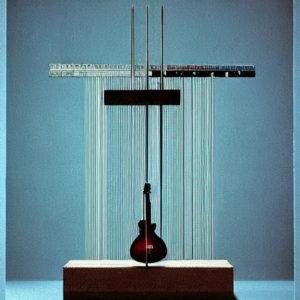Backing Tracks as a tool for practice

It’s a well-known fact that musicianship requires discipline, dedication, and a whole lot of practice. And when it comes to honing your craft as a guitarist, there’s no substitute for putting in the time to master scales and develop your shredding guitar techniques.
But let’s face it – we all have busy lives, and it’s not always easy to find the time or the motivation to sit down and grind out hours of scales and arpeggios. That’s where backing tracks come in.
Whether you’re working on standard techniques such as alternate picking or sweep picking, or compound techniques such as economy picking, outside picking or pedal tones, backing tracks are the perfect next step to contextualize the technique and take it to the next level.
How can you benefit from backing tracks?

For the uninitiated, backing tracks are recordings of instrumental accompaniment that you can play along with, either to practice specific songs or to improvise over a given chord progression. They’re a great tool for guitarists looking to take their playing to the next level, and here’s why:
- Backing tracks give you the perfect opportunity to practice melodic improvisation and phrasing. This is especially helpful if you’re a bedroom musician who doesn’t have the luxury of a full band to play with on a regular basis.
- They can help keep you motivated to practice by giving you a chance to hear your playing in a proper musical context. For this purpose, backing tracks can be used as a substitute for a metronome for when you’ve gotten a particular run or technique up to a certain speed.
- They allow you to focus on specific techniques or skills that you’re working on. For example, if you’re trying to improve your legato playing, you can find a backing track in a style that’s well suited to long legato runs and use it as a practice tool.
- They can help you learn new songs more quickly. If you’re struggling to get a particular song down, a backing track can provide a helpful reference for the rhythm and timing of the song.
- They can serve as a creative spark for your own compositions. Use a backing track as a starting point for coming up with new melodies or riffs and see where your creativity takes you. While it’s important to be careful not to steal ideas from the backing track, this can be a great way to get the creative juices flowing.
Auto Amazon Links: No products found. http_request_failed: A valid URL was not provided. URL: https://ws-na.amazon-adsystem.com/widgets/q?SearchIndex=All&multipageStart=0&multipageCount=20&Operation=GetResults&Keywords=B08QHRTCKF&InstanceId=0&TemplateId=MobileSearchResults&ServiceVersion=20070822&MarketPlace=US Cache: AAL_5b1e5a4f9b0810156bb0e3c9833abae7
There are plenty of resources out there for finding backing tracks, ranging from pre-recorded tracks that you can purchase or stream online on YouTube or Soundcloud to websites and apps that allow you to create your own custom backing tracks using MIDI files or virtual instruments.
So next time you’re struggling to find the motivation to practice your scales or improve your shredding techniques, consider giving backing tracks a try. They might just be the kick in the pants you need to take your guitar skills to the next level. So, this is how backing tracks can be helpful to master scales and shred techniques.
Shred on!



